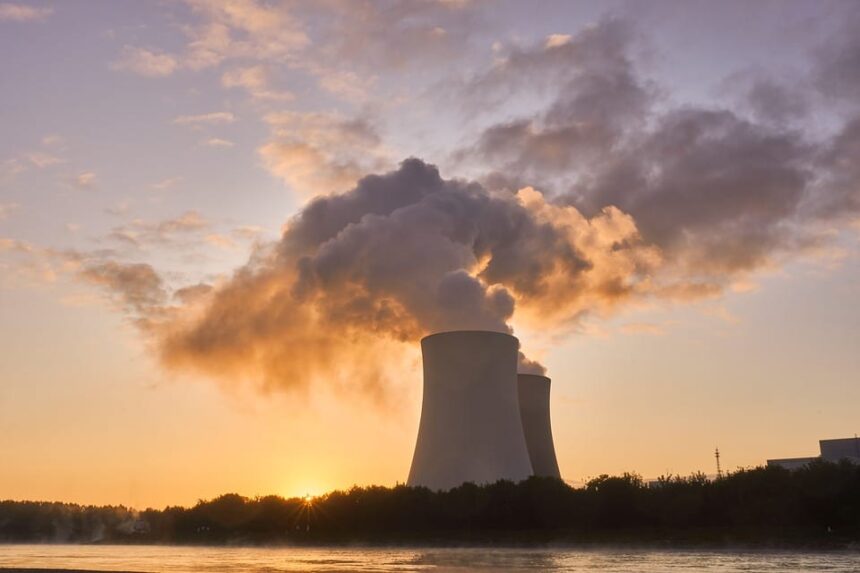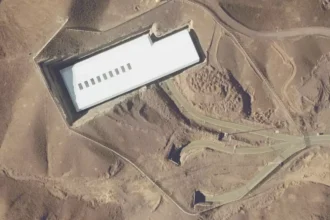A Silicon Valley startup called Oklo is leading a fast-moving effort to bring small nuclear reactors back to the United States. The company’s vision — compact, factory-built reactors serving data centers, mines, and remote grids — has attracted immense capital and high-profile backers from the tech elite. But as Oklo races toward deployment, critics warn that the mix of deep pockets, political influence, and speed-first ambitions could strain safety oversight and regulatory norms that are supposed to keep nuclear power exceptionally secure.
This article explains what Oklo plans to build, who’s backing it, why some experts are uneasy, and what it would mean for U.S. nuclear policy if the startup succeeds or stumbles.
What Oklo Wants to Build — and Why It Matters
Oklo is developing compact fast reactors, often called microreactors or small modular reactors (SMRs), that are much smaller than conventional power plants. The company’s Aurora design uses a fast-spectrum reactor and aims to deliver tens of megawatts of power in modular form — enough to run hyperscale data centers, industrial sites, or isolated communities without long transmission lines. Oklo says its approach can cut permitting and construction time compared with traditional plants and help decarbonize sectors that are hard to electrify.
The company has advanced quickly, with regulatory pre-application work with the Nuclear Regulatory Commission (NRC) and site agreements, notably a project at Idaho National Laboratory. Oklo has also signed letters of intent with potential customers, including data-center operators and industrial firms.
Who’s Bankrolling the Comeback
What sets Oklo apart is not only its technology but its investor roster. The company has drawn early capital and high-profile attention from Silicon Valley luminaries and finance figures. Investors and supporters associated with Oklo have included Sam Altman (who served as Oklo’s chairman), venture firms linked to Peter Thiel, and other well-known tech backers. Oklo went public via a SPAC in 2024 and has since attracted heightened market interest.
That pedigree has been a powerful accelerator: it opened doors to capital markets, media attention, and potential commercial partnerships that older nuclear incumbents typically don’t get as quickly. For a capital-intensive, slow-moving sector like nuclear, that’s a significant advantage.
Why Critics Are Worried
The same features that make Oklo attractive to investors — speed, star backers, and aggressive timelines — are also the source of concerns.
1. Regulatory squeeze and perceived speed-ups.
Advanced reactors are subject to rigorous review by the NRC. Yet Oklo and other startups have sought to use faster regulatory pathways or pilot programs to move quickly. Critics worry that political pressure to accelerate deployment could erode the deliberative rigor that has characterized U.S. nuclear licensing for decades.
2. Political and financial influence.
When deep-pocketed investors and politically connected figures back a technology deemed strategically important, there’s a risk that access translates into favorable timing or softened scrutiny — even if unintentionally.
3. Technical and supply challenges.
Fast reactors and HALEU (high-assay low-enriched uranium) fuels pose real technical and supply hurdles. Critics caution that optimistic cost and schedule projections for new reactor types often underestimate licensing, fabrication, and fuel-cycle complexities.
4. Market and environmental trade-offs.
Proponents pitch microreactors as clean, dispatchable power for grids and data centers. Opponents ask for clearer assessments of lifecycle impacts, decommissioning plans, and fuel-recycling proposals. Fast reactors often involve different waste and proliferation considerations than light-water reactors; these issues require careful technical and policy treatment.
Where the Regulatory Lines Are Drawn
The NRC remains the central arbiter of reactor safety in the U.S., regardless of whether a design is advanced. Oklo has publicly noted progress through NRC pre-application steps and readiness assessments, and the agency has undertaken reforms to streamline reviews for advanced designs while maintaining safety standards. Separately, the Department of Energy has run demonstration pathways intended to accelerate commercial learning. Those parallel tracks can create opportunities — and ambiguity — about which rules apply, how timing is set, and how independent technical reviews are sequenced.
Transparency and public trust will hinge on whether the NRC’s licensing remains evidence-based and independent, and whether DOE pilot programs complement rather than shortcut statutory NRC responsibilities. Public hearings, independent technical reviews, and robust environmental analyses will be essential to preserve the credibility of any fast deployments.
The Politics of a Nuclear Revival
There’s bipartisan political momentum for more domestic energy resilience and decarbonization tools — and reactors can fit both agendas. That creates an appetite in Washington to support demonstrations and incentivize commercialization through grants, loan guarantees, and legislative streamlining. But it also means nuclear startups with heavyweight supporters can attract direct political interest. The challenge for policymakers is to reconcile industrial policy and climate goals with strict regulatory independence and safety culture.
Oklo’s high profile has also made it a focal point in debates over how much government should do to “pick winners” in energy, and whether influential backers create pressure — perceived or real — on agencies to accelerate approvals.
What Success and Failure Would Each Mean
If Oklo and peers successfully deploy microreactors that operate safely and economically, the implications could be profound: new clean-power options for remote industry, resilience boosts for grids, and a flourishing domestic nuclear supply chain. Rapidly deployable reactors could also reduce reliance on fossil fuels for energy-intensive facilities like data centers.
Conversely, a highly publicized licensing mishap, safety scare, or a campaign of political intervention could set back advanced-reactor prospects for years. Nuclear credibility is fragile: the industry’s social license depends on demonstrable safety and transparent governance — not on speed or celebrity backing.
How to Square Ambition with Safety
To maximize the promise of advanced reactors while limiting risk, experts suggest several concrete steps:
- Insist on transparent, evidence-driven NRC reviews. Timelines are important, but they should not trump full technical vetting or public participation.
- Firewalls for conflicts of interest. Where investors or corporate ties intersect with regulatory or procurement decisions, strong disclosure and recusals can reduce the perception of undue influence.
- Independent, peer-reviewed safety assessments. Third-party technical audits of reactor physics, fuel handling, and emergency procedures can bolster confidence.
- Clear fuel-cycle and waste strategies. Advanced reactors that rely on HALEU or recycling must lay out long-term plans for supply, security, and disposal.
- Phased demonstration with public reporting. Pilot projects should publish data on operations, incidents, costs, and decommissioning to inform broader commercialization decisions.
Bottom Line
Oklo embodies a high-stakes experiment at the intersection of clean-energy urgency, Silicon Valley capital, and decades-old nuclear safety regimes. Its backers’ wealth and influence have accelerated development. But those same dynamics increase the pressure on regulators to be visibly independent and on company leaders to prioritize rigorous testing and transparency over speed or narrative.
If Oklo’s reactors prove safe, affordable, and scalable, they could become a major tool in America’s decarbonization toolbox. If not, the industry risks ceding not just market momentum but also the public trust that nuclear power depends on. The outcome will depend as much on governance, oversight, and public scrutiny as on engineering prowess.














